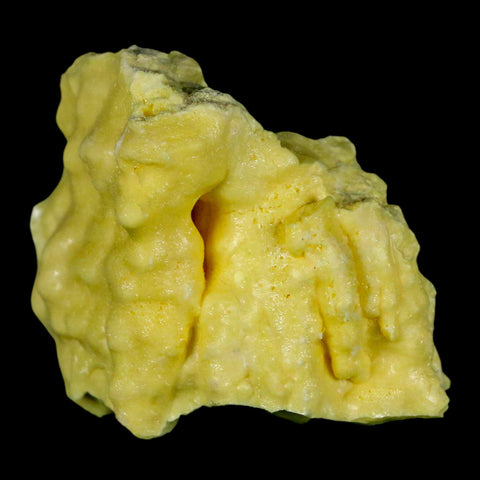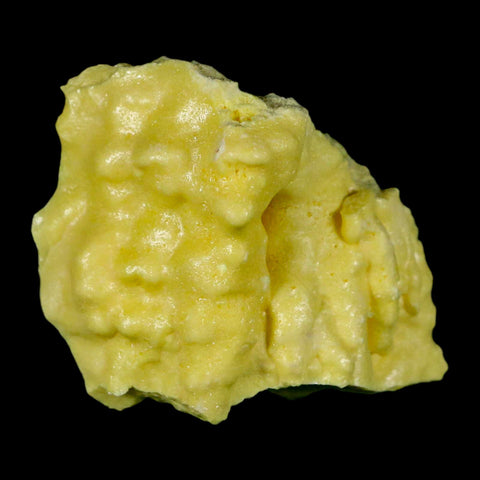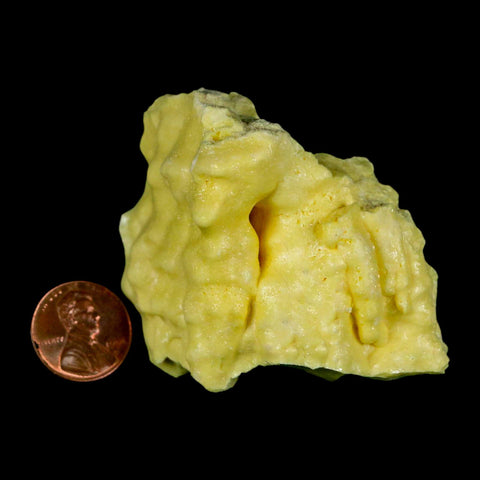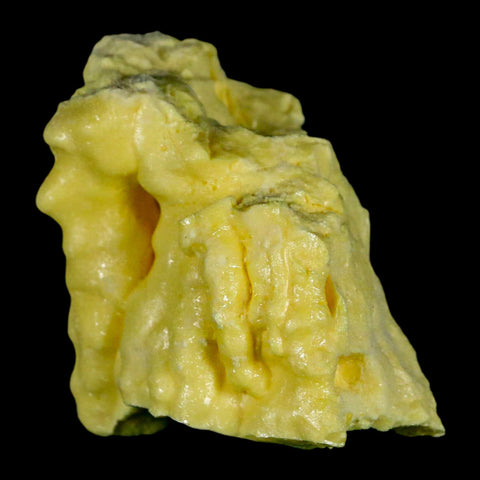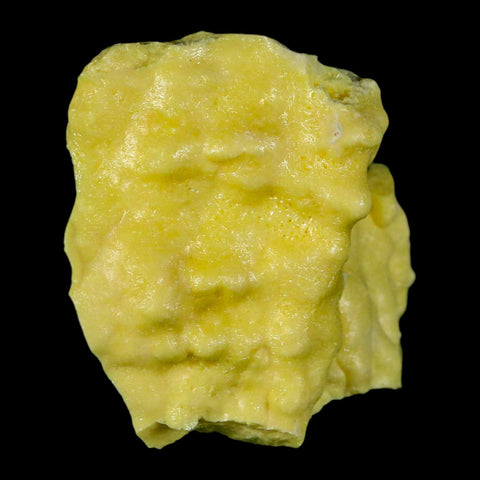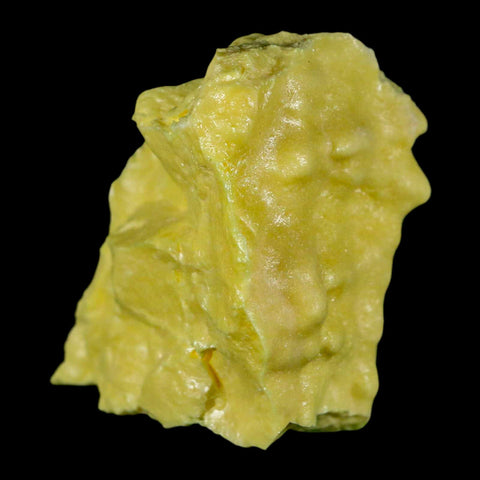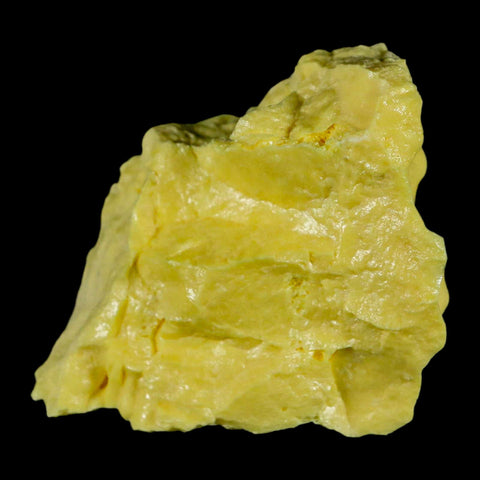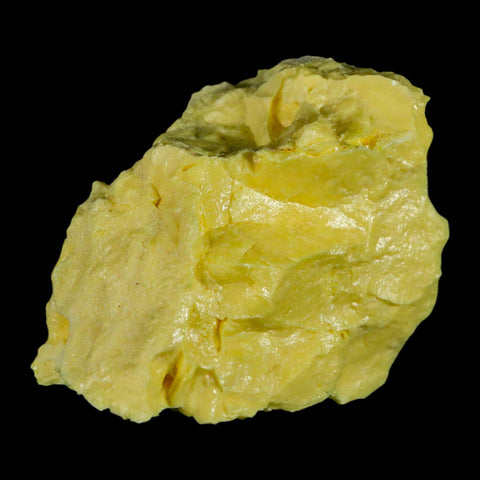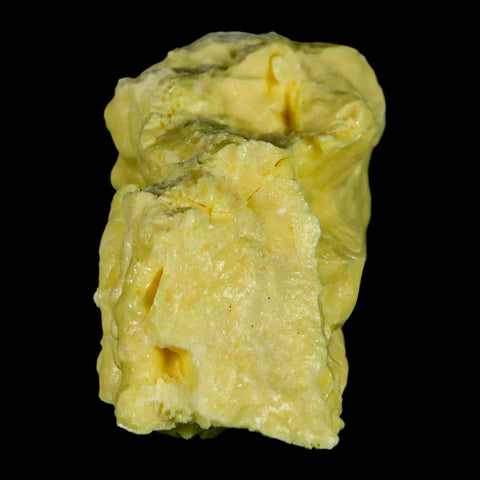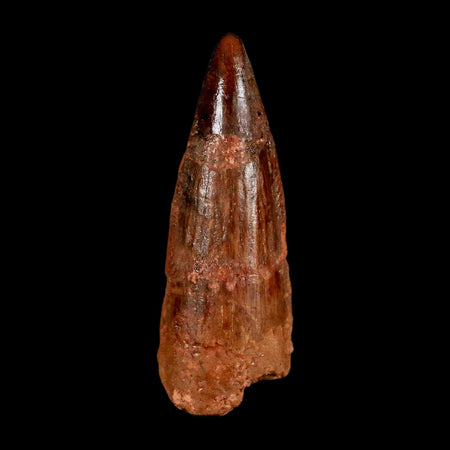2.2" Rough Bright Yellow Sulfur Crystal Mineral Specimen From Louisiana
Location: Sulfur, Louisiana, United States
Weight: 3.4 Ounces
Dimensions: 2.2 Inches Long, 2.1 Inches Wide, 1.3 Inches Thick
The item pictured is the one you will receive.
Sulfur, particularly native sulfur, has been historically significant in Louisiana due to its unique geological formation and economic importance. The sulfur deposits in Louisiana are primarily associated with the caprock of salt domes, a geological structure common in the Gulf Coast region.
The sulfur deposits in Louisiana have a unique biogenic origin. They form through the bacterial reduction of anhydrite (calcium sulfate) within the caprock of salt domes, a common geological structure in the Gulf Coast region. This process, called bacterial sulfate reduction, relies on hydrocarbons as an energy source, producing hydrogen sulfide (H₂S) in the process. The hydrogen sulfide then reacts with oxygenated groundwater, resulting in the formation of elemental sulfur.
This bacterial mechanism sets Louisiana's sulfur deposits apart from those formed by volcanic activity or other conventional geological processes. The resulting native sulfur is highly pure, making it an economically valuable resource. Understanding this unique geochemical formation provides insight into the region’s industrial significance and helps explain why Louisiana became a major sulfur-producing region during the 20th century.
Early attempts to mine sulfur in Louisiana faced significant challenges due to the unconsolidated nature of the overlying sediments and the presence of quicksand. The development of the Frasch process by Herman Frasch revolutionized sulfur mining. This innovative method involved injecting superheated water into the sulfur-bearing formation, melting the sulfur, and then pumping the molten sulfur to the surface using compressed air. The Frasch process made the extraction of sulfur from these challenging geological environments economically viable and established Louisiana as a major global producer of sulfur for many decades.
Sulfur, commonly known as "brimstone," has been an essential raw material for industries producing sulfuric acid, fertilizers, chemicals, and explosives. The sulfur mined using the Frasch process was known for its high purity, making it highly sought after. Although direct sulfur mining in Louisiana has mostly stopped due to economic shifts and the rise of sulfur recovered from natural gas processing, the state’s sulfur deposits and the advanced mining techniques developed remain significant parts of Louisiana’s industrial history and geological study.


